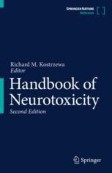Search
Search Results
-
Sex differences in estimates of cardiac autonomic function using heart rate variability: effects of dietary capsaicin
PurposeHeart rate variability (HRV) estimates the autonomic nervous system (ANS) influence on the heart and appears sex-specific. Sensory afferents...

-
Potential role of passively increased muscle temperature on contractile function
Declines in muscle force, power, and contractile function can be observed in older adults, clinical populations, inactive individuals, and injured...

-
Significance of the Vitamin D Receptor on Crosstalk with Nuclear Receptors and Regulation of Enzymes and Transporters
The vitamin D receptor (VDR), in addition to other nuclear receptors, the pregnane X receptor (PXR) and constitutive androstane receptor (CAR), is...

-
Capsaicin and Its Analogues Impede Nocifensive Response of Caenorhabditis elegans to Noxious Heat
Capsaicin is the most abundant pungent molecule identified in red chili peppers, and it is widely used for food flavoring, in pepper spray for...

-
Toll-Like Receptor 4 in Pain: Bridging Molecules-to-Cells-to-Systems
Pain impacts the lives of billions of people around the world – both directly and indirectly. It is complex and transcends beyond an unpleasant...
-
Microglial aryl hydrocarbon receptor enhances phagocytic function via SYK and promotes remyelination in the cuprizone mouse model of demyelination
Multiple sclerosis (MS) is an inflammatory-mediated demyelinating disease of the central nervous system (CNS). Although studies have demonstrated...

-
Thermal gradient ring for analysis of temperature-dependent behaviors involving TRP channels in mice
There are a lot of temperature-sensitive proteins including transient receptor potential (TRP) channels. Some TRP channels are temperature receptors...

-
The implications of lipid mobility, drug-enhancers (surfactants)-skin interaction, and TRPV1 activation on licorice flavonoid permeability
Licorice flavonoids (LFs) are derived from perennial herb licorice and have been attaining a considerable interest in cosmetic and skin ailment...

-
Epigenetic Connections of the TRPA1 Ion Channel in Pain Transmission and Neurogenic Inflammation — a Therapeutic Perspective in Migraine?
Persistent reprogramming of epigenetic pattern leads to changes in gene expression observed in many neurological disorders. Transient receptor...

-
Complement C3 Aggravates Post-epileptic Neuronal Injury Via Activation of TRPV1
Epilepsy is a brain condition characterized by the recurrence of unprovoked seizures. Recent studies have shown that complement component 3 (C3)...

-
A biophysically comprehensive model of urothelial afferent neurons: implications for sensory signalling in urinary bladder
The urothelium is the innermost layer of the bladder wall; it plays a pivotal role in bladder sensory transduction by responding to chemical and...

-
Role of TRPA1 in the pharmacological effect triggered by the topical application of trans-anethole in mice
Purpose : This study investigated the pharmacological effects of topical trans-anethole, a natural compound found in anise, star anise, and fennel...

-
TRPV1 in Pain and Itch
Transient receptor potential vanilloid type 1 (TRPV1) is a nonselective cation channel that is intensively expressed in the peripheral nerve system...
-
Post-mortem histology in transient receptor potential cation channel subfamily V member 6 (TRPV6) under-mineralising skeletal dysplasia suggests postnatal skeletal recovery: a case report
BackgroundThe calcium-selective channel TRPV6 (transient receptor potential cation channel subfamily V member 6) is crucial for maternal-fetal...

-
Survey of the Spectrum of Classic Selective Neurotoxins
Selective neurotoxinsSelective neurotoxins are of value because of their ability to selectively destroy or disable a common group of nerves...
-
TRP channels: a journey towards a molecular understanding of pain
The perception of nociceptive signals, which are translated into pain, plays a fundamental role in the survival of organisms. Because pain is linked...

-
The potential protective and therapeutic effects of cannabidiol oil on experimental Leukemia induced by DMBA in male rats
Background7,12-Dimethylbenzanthracene (DMBA) is a member of the polycyclic aromatic hydrocarbon family. It is a member of the polycyclic aromatic...

-
Asthmatic allergen inhalation sensitises carotid bodies to lysophosphatidic acid
The carotid bodies are multimodal sensors that regulate various autonomic reflexes. Recent evidence demonstrates their role in immune reflex...

-
Tetrahydrocannabinols: potential cannabimimetic agents for cancer therapy
Tetrahydrocannabinols (THCs) antagonize the CB1 and CB2 cannabinoid receptors, whose signaling to the endocannabinoid system is essential for...

-
Expression of Trpa1 and Trpv1 Genes in the Hypothalamus and Blood Pressure in Normotensive and Hypertensive Rats. Effect of Losartan and Captopril
Analysis of the role of genomic regulation of systolic BP (SBP) in normal and hypertensive rats showed the presence of an inverse relationship...
